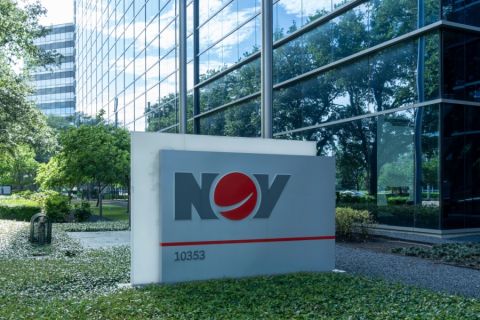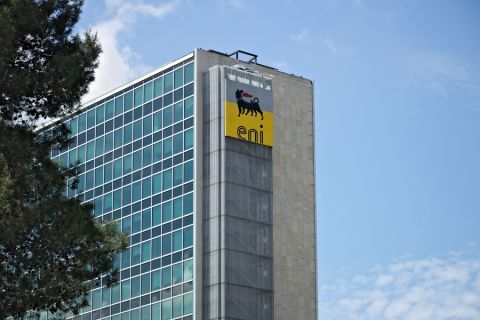Geophysicists have waited a long time for compute power to catch up to their tricky and time-consuming algorithms. According to Dirk Smit, chief scientist-geophysics for Shell, computers have not only caught up – they’re ahead of the game. Smit talked to a group of journalists in Houston about his belief that we are close to a paradigm shift in petroleum exploration. In the past, upstream technology has lagged behind upstream business, but now it’s possible that new technology can actually drive business opportunities, he said. “We need to start thinking about how we can manipulate the subsurface,” he said. To do this will require much more data than is currently being acquired, and that in turn will require some serious technological breakthroughs. For geoscientists who are already swimming in data, this may sound like too much of a good thing. But Smit said that current seismic methods require many different inputs just to constrain the model. In shales, for instance, he said that more sophisticated reconnaissance techniques like seismic are still in their infancy when it comes to predictive power. Current seismic methods require significant redundancy just to convert time to depth, for instance. And often it’s still not enough. He showed an example of a dry hole in the Gulf of Mexico that was drilled based on geological assumptions. Despite the optimism of the geosciences team, who thought the well had a 70% probability of success, it was drilled into a fault and didn’t find any sands. “Sometimes you don’t know when it doesn’t work,” he said, adding that it’s hard to justify a multi-million dollar decision on a technology that lacks predictive capability. Smit is not a peak oil proponent; he maintains that there is still an abundance of oil and gas in the world, but it can’t be imaged with current technology. He likened it to medicine in the old days where a surgeon would cut a person open just to figure out what might be wrong. Finding more oil is also going to require a change in mindset. The traditional method of finding oil and gas doesn’t necessarily require sophisticated tools; it just requires a decent geological understanding. “This concept is going to have to change,” he said. The change is likely to resemble the change in compute power that has led to Moore’s Law, the idea that computing power doubles in speed every two years without an attendant increase in price. This was possible due to the miniaturization of computer parts, and Smit said a similar thing will happen in the sensor industry. On a graph charting Moore’s Law against channel count, Smit showed that those lines crossed in 2007, meaning that now sensors have to catch up with computers and not the other way around. Onshore, getting the type of data sampling that Smit believes is necessary (1 million channels) is impossible with a cabled system. This will call for what he terms “consumer seismic” – cheaper systems, more efficient storage, new algorithms, and an “Internet” of sensors that can communicate with each other and interact in real time. To this end, Shell has a couple of research initiatives. One is with PGS, applying its OptoSeis fiber-optic marine sensor technology in an onshore setting. So far the system has been tested in Oman, and it will be in production soon. It’s reeled off the back of a truck and provides comparable data at a fifth of the cost of a traditional cabled system. Shell is also working with HP on a MEMS sensor that can take 200 samples per second. The sensor was compared to a seismograph when sensing an earthquake and provided superior results. In both cases, Smit said, “It’s possible to increase density while reducing cost.” He envisions a continuous monitoring solution that would be a hybrid of many different measurements and would turn the wells themselves into sensors. Passive seismic, recorded constantly, would provide a “backbone” for more periodic active surveys. Overall, consumer geosciences will need to consist of: • Better rock physics relationships; • Better resolution; • Hybrid permanent systems; • Faster imaging with no approximations; and • Faster visualization. “We need more, faster, and cheaper all at once,” Smit said.
Recommended Reading
NOV Announces $1B Repurchase Program, Ups Dividend
2024-04-26 - NOV expects to increase its quarterly cash dividend on its common stock by 50% to $0.075 per share from $0.05 per share.
Repsol to Drop Marcellus Rig in June
2024-04-26 - Spain’s Repsol plans to drop its Marcellus Shale rig in June and reduce capex in the play due to the current U.S. gas price environment, CEO Josu Jon Imaz told analysts during a quarterly webcast.
US Drillers Cut Most Oil Rigs in a Week Since November
2024-04-26 - The number of oil rigs fell by five to 506 this week, while gas rigs fell by one to 105, their lowest since December 2021.
CNX, Appalachia Peers Defer Completions as NatGas Prices Languish
2024-04-25 - Henry Hub blues: CNX Resources and other Appalachia producers are slashing production and deferring well completions as natural gas spot prices hover near record lows.
Chevron’s Tengiz Oil Field Operations Start Up in Kazakhstan
2024-04-25 - The final phase of Chevron’s project will produce about 260,000 bbl/d.




